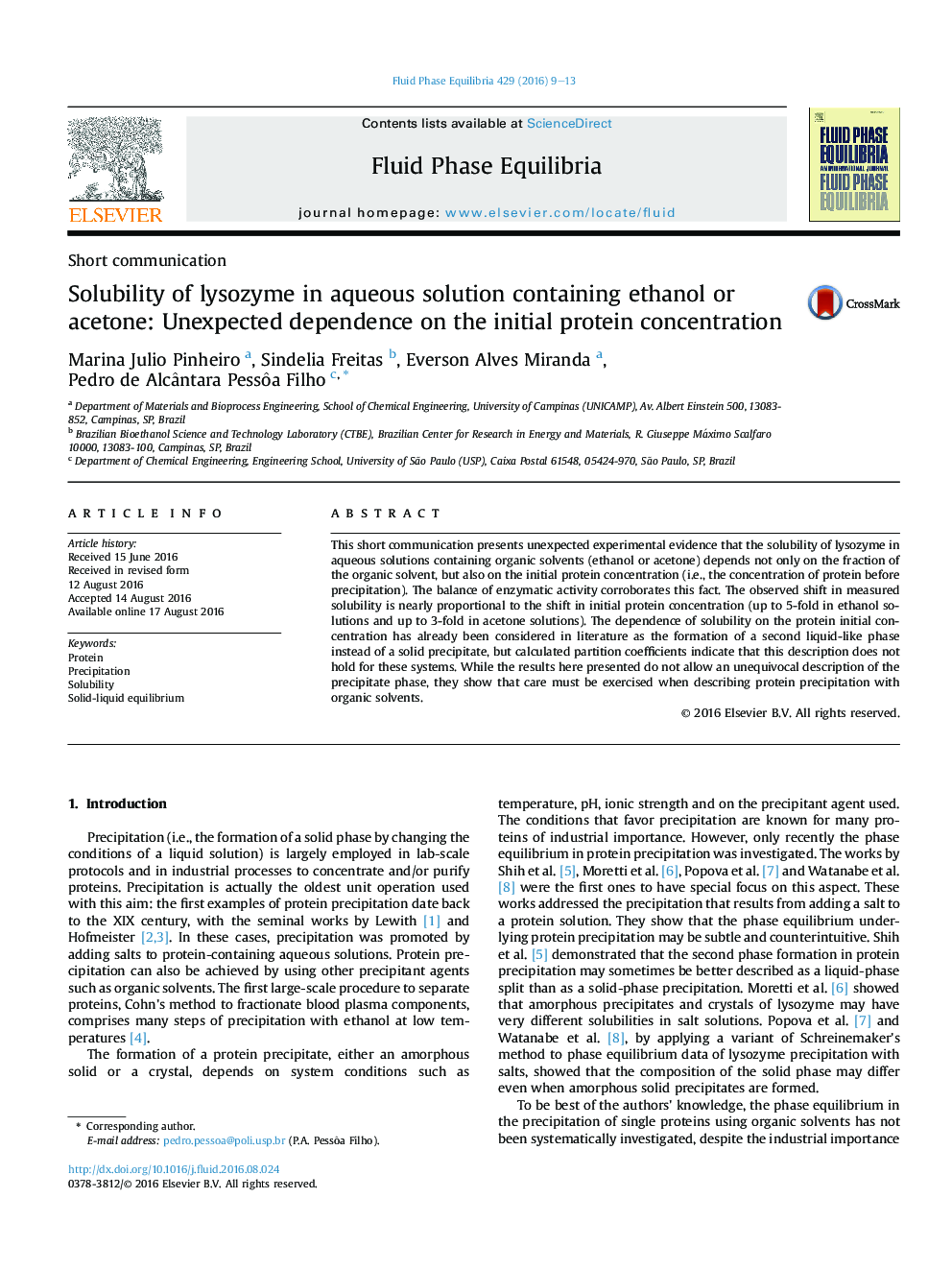| Article ID | Journal | Published Year | Pages | File Type |
|---|---|---|---|---|
| 4768204 | Fluid Phase Equilibria | 2016 | 5 Pages |
Abstract
This short communication presents unexpected experimental evidence that the solubility of lysozyme in aqueous solutions containing organic solvents (ethanol or acetone) depends not only on the fraction of the organic solvent, but also on the initial protein concentration (i.e., the concentration of protein before precipitation). The balance of enzymatic activity corroborates this fact. The observed shift in measured solubility is nearly proportional to the shift in initial protein concentration (up to 5-fold in ethanol solutions and up to 3-fold in acetone solutions). The dependence of solubility on the protein initial concentration has already been considered in literature as the formation of a second liquid-like phase instead of a solid precipitate, but calculated partition coefficients indicate that this description does not hold for these systems. While the results here presented do not allow an unequivocal description of the precipitate phase, they show that care must be exercised when describing protein precipitation with organic solvents.
Related Topics
Physical Sciences and Engineering
Chemical Engineering
Chemical Engineering (General)
Authors
Marina Julio Pinheiro, Sindelia Freitas, Everson Alves Miranda, Pedro de Alcântara Pessôa Filho,
